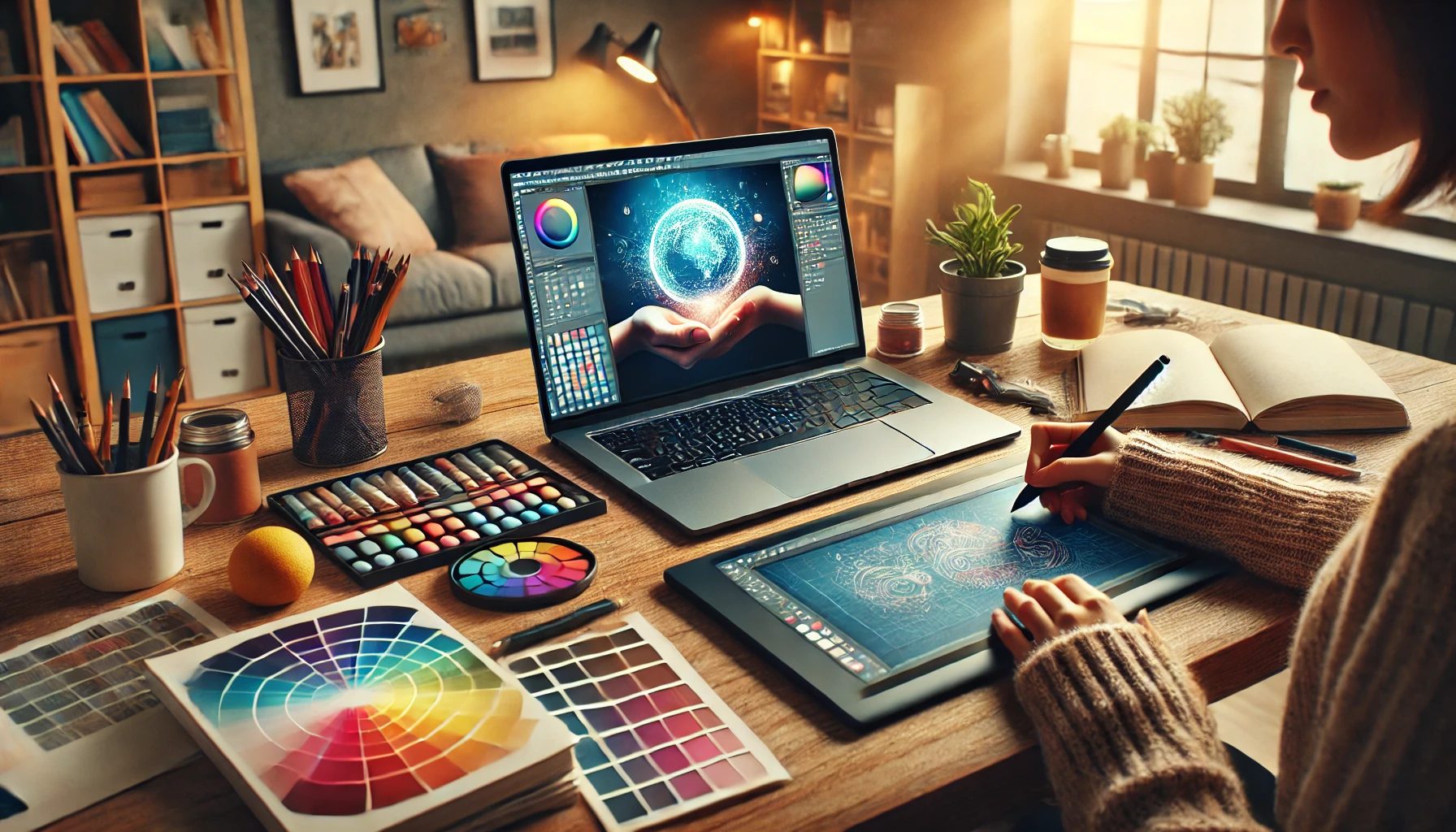Graphic design is a highly valued skill, and learning it on your own is a challenging yet incredibly rewarding journey. With the availability of online tools and resources, it is possible to develop your skills and build a solid career, even starting from scratch.
In this article, you will find practical tips and essential resources for effectively learning graphic design on your own.
1. Understand What Graphic Design Is
Before diving in, it’s important to understand what graphic design involves.
Definition: Graphic design is the practice of creating visual solutions to communicate messages.
Areas of Focus: Branding, editorial design, UX/UI, illustration, and more.
💡 Tip: Explore different areas to discover which one sparks your interest the most.
2. Choose the Right Tools
Learning to use the right tools is crucial for practicing graphic design.
Essential Software:
- Adobe Photoshop: Ideal for image editing.
- Adobe Illustrator: Focused on vector design and logo creation.
- Canva: Intuitive tool for beginners.
- Figma: Great for digital design and prototyping.
💡 Tip: Try free or trial versions before investing in paid tools.
3. Learn the Fundamentals of Design
Mastering the basic principles of design is essential to creating effective, professional work.
Design Fundamentals:
- Color Theory: How to combine and apply colors effectively.
- Typography: Choosing and using fonts effectively.
- Composition: Organizing elements in a harmonious way.
- Proportion: Understanding scales and alignment.
💡 Useful Resources:
- Adobe Color to explore color palettes.
- YouTube tutorials on basic design principles.
4. Practice with Simple Projects
Practice is the best way to learn graphic design.
Exercises for Beginners:
- Recreate famous logos.
- Create posters for fictional events.
- Design posts for social media.
💡 Tip: Bring your ideas to life using Canva or Adobe Illustrator.
💡 Tip: Share your projects on platforms like Behance or Dribbble to receive feedback.
5. Explore Online Learning Resources
The internet is full of free and paid materials to learn graphic design.
Free Online Courses:
- Coursera: Introduction to Graphic Design.
- Canva Design School: Tutorials for beginners.
- YouTube: Channels like The Futur and GFX Mentor.
Paid Courses:
- Domestika: Specific, practical-focused courses.
- Skillshare: Subscription service with access to thousands of classes.
- Udemy: Affordable courses with certification.
💡 Tip: Combine free and paid courses to maximize your learning experience.
6. Build a Portfolio
Even as a beginner, it’s important to gather your work in a portfolio.
What to Include:
- Fictional projects that showcase your skills.
- Real work done for friends or non-profits.
Where to Publish:
- Behance.
- Instagram.
- Personal website (platforms like Wix or Squarespace are great options).
💡 Tip: Regularly update your portfolio as you grow.
7. Join Creative Communities
Connecting with other designers is a great way to learn and get inspired.
Online Communities:
- Reddit (r/graphic_design).
- Facebook Groups.
- Discord.
Sharing Platforms:
- Behance and Dribbble to follow other designers and exchange ideas.
💡 Tip: Don’t be afraid to ask for feedback; it’s essential for growth.
8. Develop Your Creativity
Creativity is a skill that can be developed over time.
Creative Exercises:
- Create something new every day, even if it’s simple.
- Experiment with different styles and trends.
Inspiration:
- Browse Pinterest and Behance to collect references.
- Study the work of renowned designers.
9. Establish a Study Routine
Consistency is key when learning on your own.
Plan Your Time: Dedicate a few hours each week to studying and practicing.
Track Your Progress: Keep a journal or record of your projects and achievements.
💡 Tip: Use tools like Trello to organize your tasks and goals.
10. Be Patient and Persistent
Learning graphic design on your own takes time and dedication. Don’t compare yourself to experienced professionals; focus on your own progress.
Celebrate Small Wins: Every completed project is a step forward.
Learn from Mistakes: Mistakes are part of the growth process.
Conclusion: Learn at Your Own Pace
With the tips and resources presented in this article, you have everything you need to start your graphic design journey. Practice, study, and a passion for creativity will be your best allies in becoming a skilled and confident designer.

